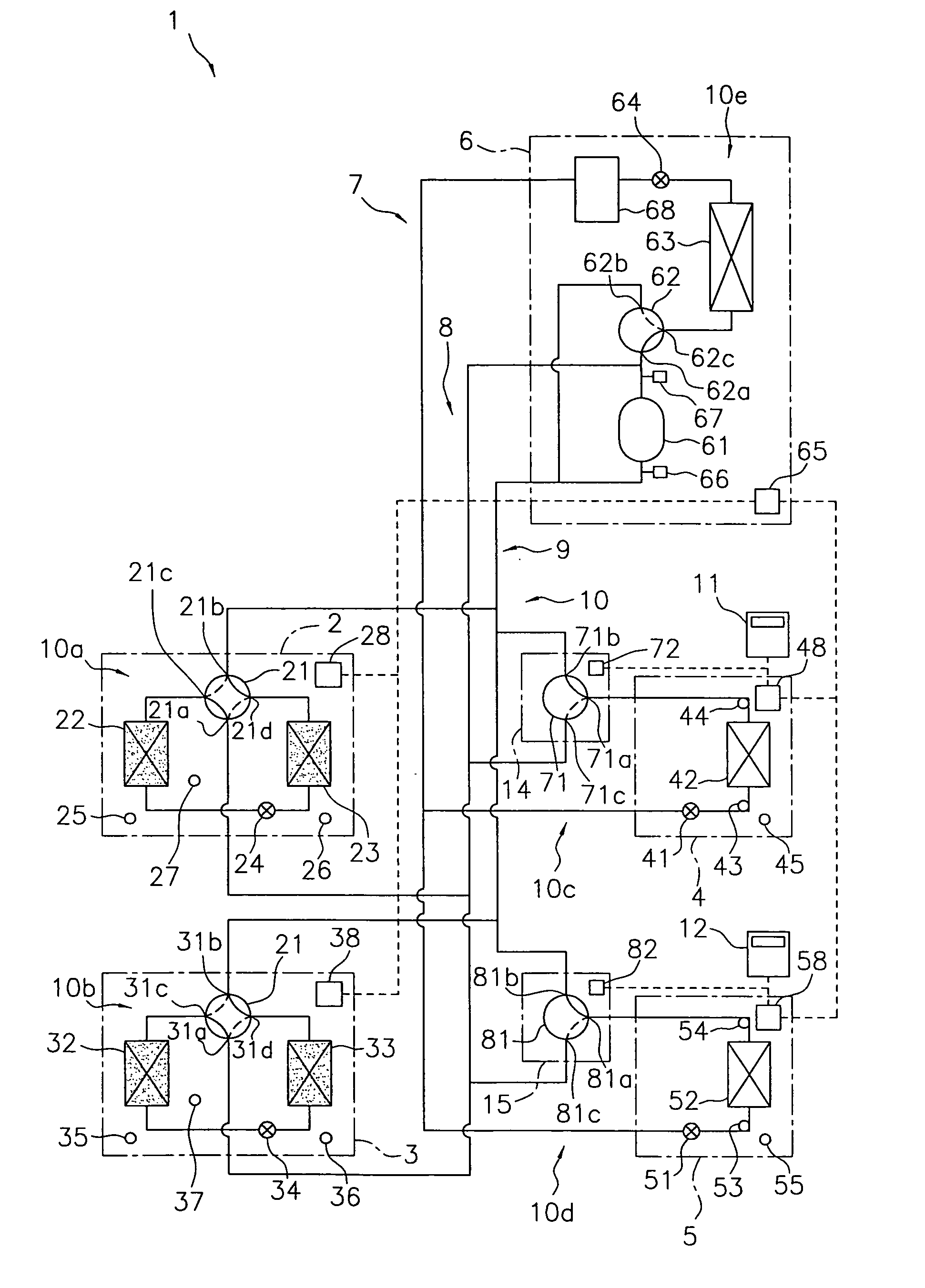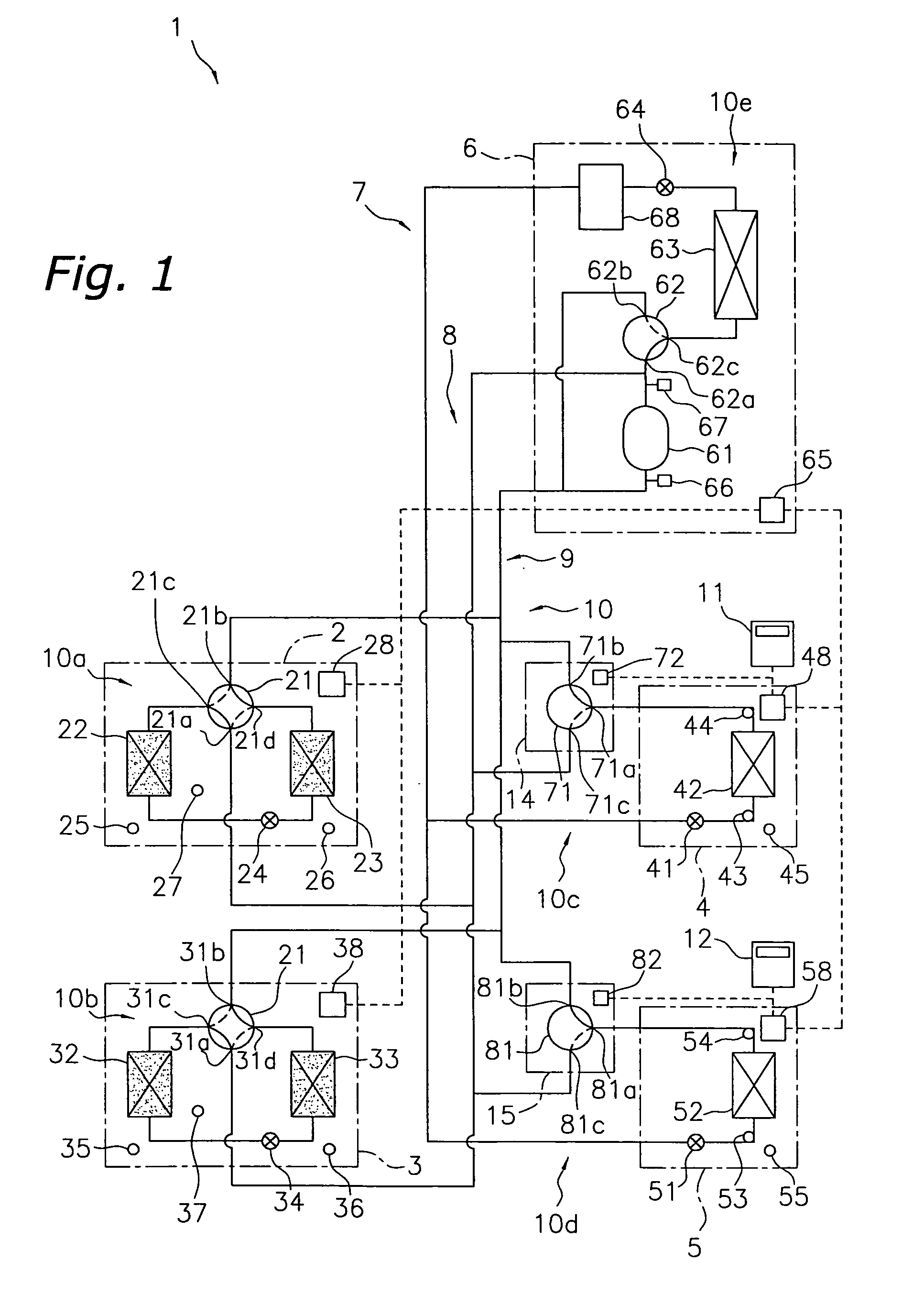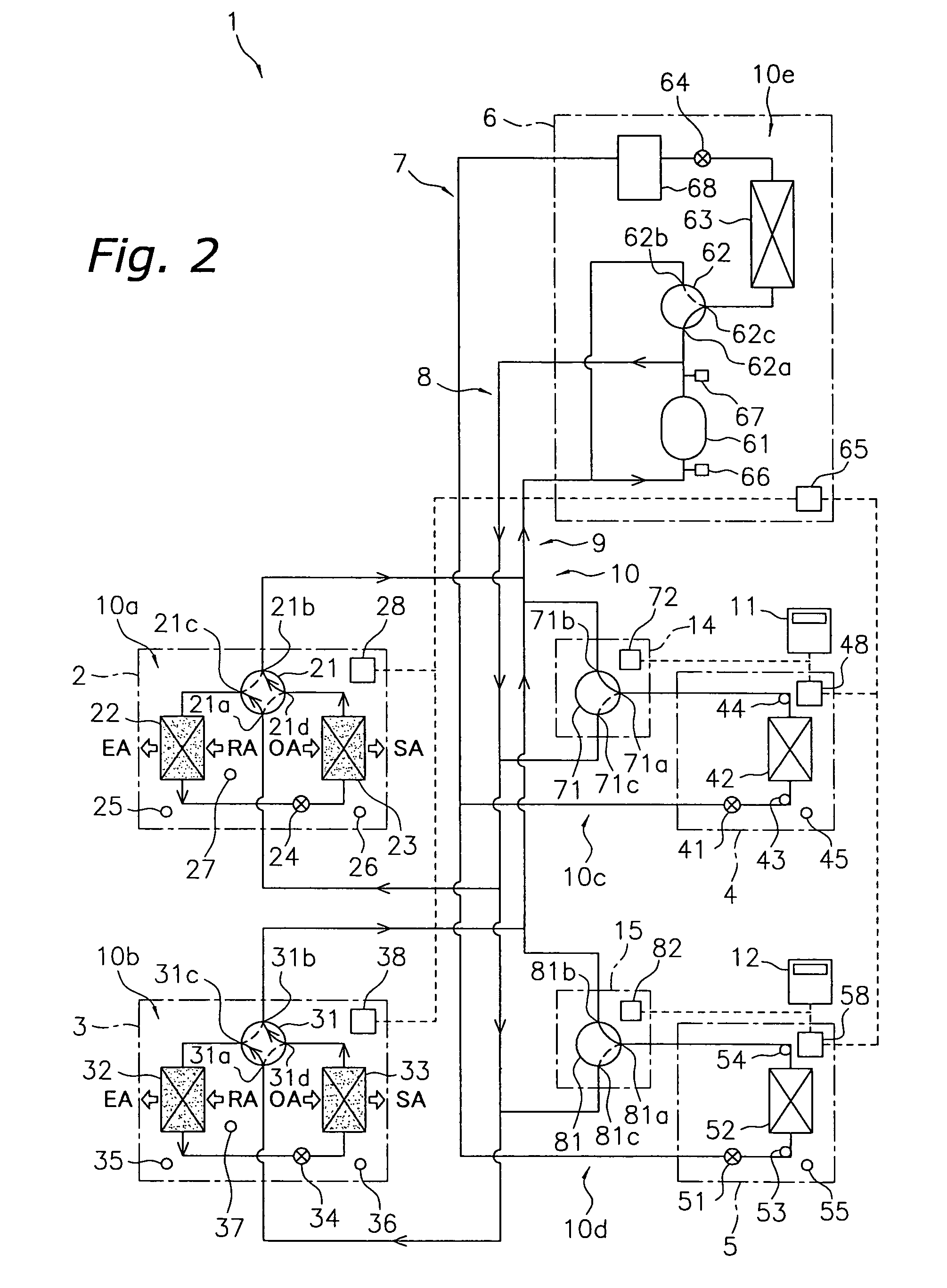Air conditioning system
a technology of air conditioning system and air conditioner, which is applied in the field of air conditioning system, can solve the problems of reducing the coefficient of performance (cop), not achieving sensible heat load, increasing the number of parts to be maintained, and increasing the cost and cos
- Summary
- Abstract
- Description
- Claims
- Application Information
AI Technical Summary
Benefits of technology
Problems solved by technology
Method used
Image
Examples
first embodiment
(1) Configuration of the Air Conditioning System
[0128]FIG. 1 a schematic diagram of a refrigerant circuit of an air conditioning system 1 of a first embodiment according to the present invention. The air conditioning system 1 is an air conditioning system that treats the latent heat load and the sensible heat load in the room of a building and the like by operating a vapor compression type refrigeration cycle. The air conditioning system 1 is so-called separate type multi air conditioning system, and mainly comprises: a plurality (two in this embodiment) of latent heat utilization units 2, 3 connected in parallel with one another; a plurality (two in this embodiment) of sensible heat utilization units 4, 5 connected in parallel with one another; a heat source unit 6; and connection pipes 7, 8, 9 which connect the latent heat utilization units 2, 3 and the sensible heat utilization units 4, 5 to the heat source unit 6. In the present embodiment, the heat source unit 6 functions as a ...
second embodiment
[0317]In the air conditioning system 1 of the above-described first embodiment, the sensible heat utilization side refrigerant circuits 10c, 10d are connected to the liquid connection pipe 7 that is connected to the liquid side of the heat source side heat exchanger 63 of the heat source side refrigerant circuit 10e, and also are switchably connected between the discharge gas connection pipe 8 and the inlet gas connection pipe 9 through the air conditioning switching valves 71, 81, and thereby, in each of the sensible heat utilization side refrigerant circuits 10c, 10d, the air heat exchangers 42, 52 can be caused to function as evaporators or condensers. As a result, an air conditioning system capable of so-called simultaneous cooling and heating operations is achieved, in which cooling and heating are simultaneously performed depending on the needs of each air-conditioned room, for example, cooling an air-conditioned room while heating a different air-conditioned room. However, as...
third embodiment
(1) Configuration of the Air Conditioning System
[0324]FIG. 36 a schematic diagram of a refrigerant circuit of an air conditioning system 401 of a third embodiment according to the present invention. The air conditioning system 401 is an air conditioning system that treats the latent heat load and the sensible heat load in the room of a building and the like by operating a vapor compression type refrigeration cycle. The air conditioning system 401 is a separate type multi air conditioning system, and mainly comprises a plurality (two in this embodiment) of latent heat utilization units 2, 3 connected in parallel with one another, a plurality (two in this embodiment) of sensible heat utilization units 404, 405 connected in parallel with one another, a heat source unit 406, and connection pipes 407, 408, 409 which connect the latent heat utilization units 2, 3 and the sensible heat utilization units 404, 405 to the heat source unit 406. In the present embodiment, the heat source unit 4...
PUM
 Login to View More
Login to View More Abstract
Description
Claims
Application Information
 Login to View More
Login to View More - R&D
- Intellectual Property
- Life Sciences
- Materials
- Tech Scout
- Unparalleled Data Quality
- Higher Quality Content
- 60% Fewer Hallucinations
Browse by: Latest US Patents, China's latest patents, Technical Efficacy Thesaurus, Application Domain, Technology Topic, Popular Technical Reports.
© 2025 PatSnap. All rights reserved.Legal|Privacy policy|Modern Slavery Act Transparency Statement|Sitemap|About US| Contact US: help@patsnap.com



